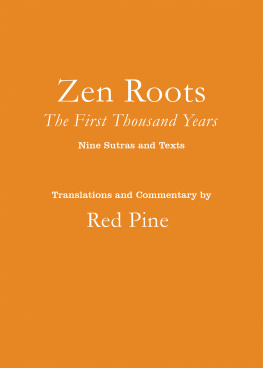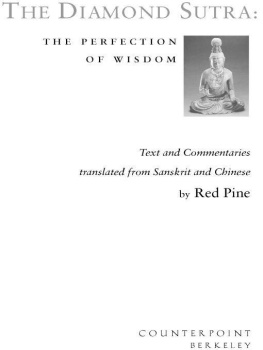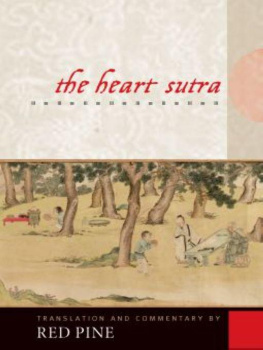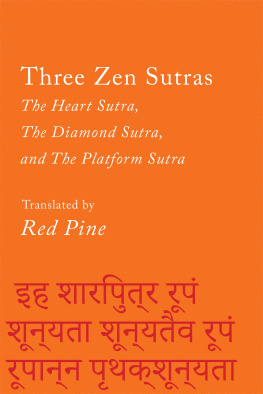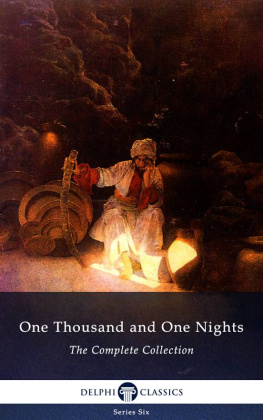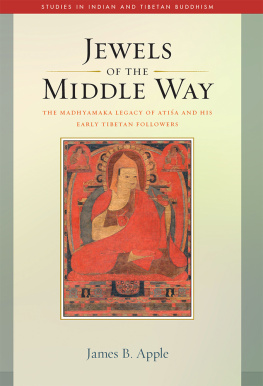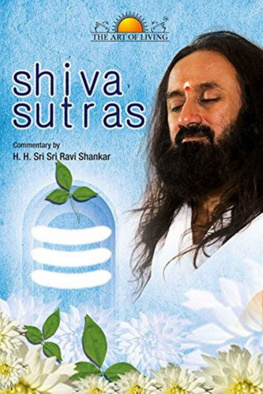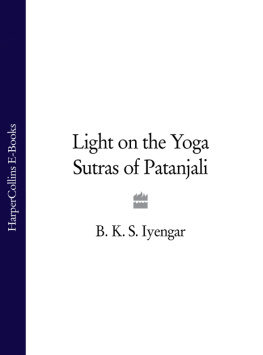Table of Contents
Guide
Zen Roots
The First Thousand Years
TRANSLATIONS BY
Red Pine
COUNTERPOINT
Berkeley, California
Contents
Fifty years ago, when I first started reading about Zen, D.T. Suzukis Manual of Zen Buddhism was a constant companion. It included the recorded words of the earliest Zen teachersas well as those of the Buddhafrom which Zen took root. This book is an homage, a belated thank you for the gift.
Beginning with the Heart and Diamond sutras was an easy decision. They are the first two sutras I read. It took a lot longer than I expected before I began to understand them. They looked so simple, and they are, which is always a problem. What slowed me down was their teaching known as Prajnaparamita, a teaching that points to our mind before we learn how to divide the indivisible.
The Hearts teaching of Prajnaparamita revolves around the word emptiness, that whatever we think of as real is just our imagination. It isnt that reality isnt real, it is just that thinking it exists out theresomewhere other than our mindcreates nothing but trouble. In place of our universe of things, the Heart Sutra asks us to chant a mantra: to go beyond, to rely on wisdom as opposed to knowledge. And to keep wisdom from turning into knowledge, the Heart pairs it with compassion. It delivers its message through the voice of Avalokitesvara, the Bodhisattva of Compassion, who asks us to take refuge in Prajnaparamita, the Mother of All Buddhas.
In the Diamond Sutra, the Buddha never once mentions emptiness. He just uses different words. He tells us that to talk about anything is to talk about nothing. This is what anything turns out to benothing, emptiness again. But before the Buddha starts talking about nothing, he, too, calls on the power of compassion. He urges us to vow to liberate all beingsnot just ourselvesbut to do so without becoming attached to any concept involved in such a vow. If we can do this, he says, we will create the same spiritual body of merit that forms the basis of every buddhas enlightenmenthis and ours. Like the Heart, the Diamond couldnt be simpler. Simple, though, doesnt mean easy.
The next sutra is even simpler. Its the Vimalakirti, named for a merchant who was ill and who the Buddhas disciples were too embarrassed to visit, having been upstaged during previous encounters with Buddhisms most famous layman. Finally, Manjusri agrees, and we get to witness the sick layman crossing swords with the Bodhisattva of Wisdom, not to mention a celestial female teasing Sariputra, the Buddhas wisest disciple.
The next sutra is the last one anyone would call simple. The trick is not to pay too much attention to the words. When Bodhidharma brought Zen to China, the Lankavatara was the text he recommended to his disciples. As with the Vimalakirti, there wasnt room for more than a sample, but enough, I hope, to open a door. Zen masters often summarized the Lankas teaching with the suggestion we have a cup of tea then taste the tea. How hard could that be?
Since it was Bodhidharma who asked his disciples to read the Lanka, I thought it only right we hear from him too. He didnt leave much in the way of written materials, but he did leave Principles & Practice. If Zen has any message, its that it doesnt take a lot of words, and this is a good example.
While Bodhidharma may have brought the living example of Zen to China, he made as much of an impression as a frog jumping into the ocean. Fortunately, he found a successor, and his successor found a successor, and we finally get our first evidence in writing that Zen was putting down roots in the Middle Kingdoma poem entitled Trusting the Mind about emptinesss constant companion: nonduality. After reading the Lankavatara, this should be a real pleasure.
The poem, though, didnt make much of a ripple either. Zens Third Patriarch had only one disciple. But the gods smiled. That disciple had five hundred. And his successor, the Fifth Patriarch, had a thousand. And among those thousand was an illiterate jungle dog named Huineng , who became Zens Sixth Patriarch and the author of Zens most famous text: the Platform Sutra, in which he teaches us One Practice Samadhi. Again, if its not simple, its not Zen.
Toward the end of his life, Huineng was visited by a monk named Yongjia , who traveled a thousand kilometers just to see whether he, too, had understood the teaching of Zen in the absence of a teacher, which was what Huineng did. Its always good to have a confirmation that its the world thats crazy. Finding out he was fine, Yongjia stayed only one night then returned home to take care of his sister, who edited his Song of Enlightenment from the writings he left behind.
Ironically, both monks died the same year, in 713. Yongjia didnt have any disciples, unless we count his sister, but Huineng had over three thousand, among them his dharma heir, Huairang . In less than a hundred years, Huairangs disciples and their disciples were able to establish a dozen monasteries in the provinces just to the north, all of them built to reflect the Fourth Patriarchs insight that the best way to practice Zen was with fellow practitioners in self-supporting agricultural communes. Up until then, Buddhist monks had considered farming a violation of the precepts, as it meant killing bugs and worms. Within one small area alone west of the provincial capital of Jiangxi were the mountain-basin communes of Huairangs dharma heir (Mazu ), his dharma heir (Baizhang ), and his dharma heir (Huangbo ). I had just enough room for Huangbos Transmission of the Mind.
I was hoping this book would be smaller. But one old friend led to another. It is, though, just words. Dont let them distract you from whats important.
Red Pine
Port Townsend
Fall 2020
Introduction
When the people of ancient India began exploring who they were, they began the same way we might today. They concluded that there was something outside themselves and something inside, and they were somewhere in between. They called the outside rupa, or form, and the inside nama, what you can name but cant see. Over time, they came up with a number of approaches to find the self they were certain was there, each with a different emphasis. For those who focused on the inside, there were the nesting dolls of the skandhas; for those who focused on the outside, there were the sensory-based ayatanas; and for those who focused on both, there were the all-embracing dhatus. Like a doctor prescribing medicine for different ailments, the Buddha sent his disciples on wild-goose chases into each of these realms circumscribing the extent of our awareness. He also prescribed the temporal scheme of the nidanas that he used when he achieved Enlightenment, and he even recommended the Four Truths
In the centuries following Sakyamunis Nirvana, a number of sects arose that looked at these quests the Buddha had recommended and concluded that although he had used them to drive home the lesson that there was no self, the realms themselves were realotherwise, why would the Buddha have recommended them? For these sects, the skandhas, the ayatanas, the dhatus, the nidanas, the Four Truths, the Eightfold Path, even nirvanaall of them were real. They called them dharmas, what can be grasped, and made matrices linking them. They held that by studying the relationships among these dharmas they could become enlightened.
This marked the rise of the Abhidharma, or Dharmology, schools, which occurred in the third century BC . However, not everyone agreed with such a view, and resistance to it eventually gave rise to the Prajnaparamita teachings in the second century BC and to such sutras as the Heart and the Diamond soon after.

